Tenkai: Tendai Monk, Deep Bonds with the Tokugawa Shogunate, the Houkouji Bell Incident, His Life and Influence on the Siege of Osaka
イントロダクション
江戸時代の幕開けと共に、日本の歴史は新たな章を迎えました。
この重要な時期に、天海という特異な人物が現れます。
彼は、単なる天台宗の僧侶を超えた存在であり、徳川家康との深い関係を築き上げました。
天海の人生は、方広寺鐘銘事件から大坂の陣に至るまで、日本史における重要な転換点に大きな影響を与えたのです。
天海は、静かな修行生活から一転して政治の渦中に身を投じ、その時代の流れを読み解く卓越した洞察力を発揮しました。
彼は徳川家康の信頼を得て側近となり、慈眼大師とも称されるようになります。
その人生は、織田信長による比叡山焼き討ちから生き延び、武田信玄に招かれ甲斐国へ移住するなど、波乱万丈でした。
天海はまた、武蔵国の無量寿寺北院に関わり、方広寺鐘銘事件という大坂の陣の発端となる出来事にも深く関与しています。
彼は山王一実神道の創始者としても知られ、「東照大権現」として崇敬されるほどの影響力を持ちました。
この記事では、天海がいかにして徳川家と結びつき、その絆が日本史の流れをどのように変えていったのかを探ります
。天海の生涯を通じて、江戸時代初期の政治的、社会的背景を理解することで、彼の歴史的重要性が明らかになります。
天海の物語は、日本の歴史における不可欠な一部であり、その影響は今日に至るまで続いています。
Introduction
With the dawn of the Edo period, Japan’s history entered a new chapter. It was during this pivotal time that a distinctive figure named Tenkai emerged.
Beyond being a mere Tendai Buddhist monk, Tenkai forged a deep bond with Tokugawa Ieyasu, shaping crucial turning points in Japanese history from the Houkouji Bell Incident to the Siege of Osaka.
Tenkai’s life journey transitioned from a quiet life of spiritual practice to the heart of political power, where he displayed remarkable insight into the currents of his era.
Earning Tokugawa Ieyasu’s trust, he became a close advisor and was revered as Jigen Daishi, the Great Master of Compassionate Eyes.
His life was tumultuous, surviving the destruction of Mt. Hiei by Oda Nobunaga and relocating to Kai Province under Takeda Shingen’s invitation.
Tenkai’s involvement with Musashino’s Muryojuji Northern Court and the Houkouji Bell Incident set the stage for the Siege of Osaka.
He also founded the Shinbutsu Shugo Shrine and was revered as Toshogu Daigongen, demonstrating his profound influence.
This article explores how Tenkai’s alliance with the Tokugawa family reshaped Japanese history, providing insights into the political and social landscape of early Edo period Japan.
Tenkai’s story is an indispensable part of Japanese history, and his influence continues to resonate to this day.
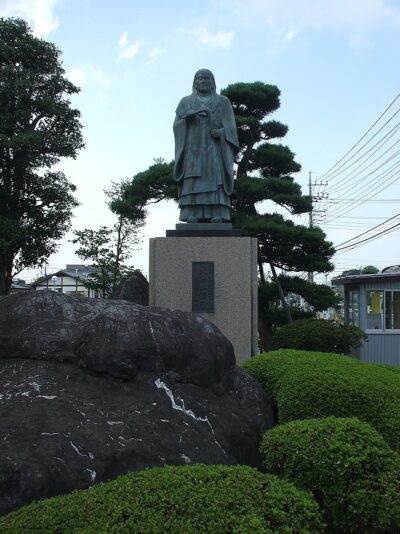
Statue in Front of the Gate of Kitain Temple
天海の生涯と功績
天海は、日本史上でも特に興味深い人物の一人です。
彼の生涯は、激動の戦国時代を生き抜いた証として、今も多くの人々を魅了しています。
慈眼大師とも称される天海は、徳川家康の側近としても知られ、その智慧で多くの難局を乗り越えました。
織田信長による比叡山焼き討ちの際には、すでに天台宗の学びを深めていた彼は、武田信玄の招聘を受け甲斐国へと移住。
そこでの経験が、後の彼の人生に大きな影響を与えたと言われています。
また、武蔵国の無量寿寺北院にて修行を積み、その後、大坂の陣の発端ともなった方広寺鐘銘事件にも関わるなど、彼の生涯は波乱に富んでいました。
山王一実神道の創始者としてもその名を残し、「東照大権現」として祀られる徳川家康との深い関係は、日本の歴史を語る上で欠かせない要素です。
天海の功績は、ただの僧侶に留まらず、政治的な影響力も持ち合わせた、まさに多面的な人物像を私たちに示しています。
天海の出自と生い立ち
天海は、江戸時代初期に活躍した僧侶で、慈眼大師とも称されます。
彼の出自は謎に包まれていますが、徳川家康の側近として知られ、天台宗を学びながら歴史の表舞台に登場しました。
若い頃、織田信長による比叡山焼き討ちの悲劇を生き延び、その後、武田信玄の招聘を受けて甲斐国に移住。
そこでの経験が、彼の人生に大きな影響を与えたとされます。
天海は武蔵国の無量寿寺北院にも関わり、その地で修行を積みました。
また、大坂の陣の発端となった方広寺鐘銘事件にも関与し、その智謀で時の権力者たちと深い関わりを持ちました。
彼は山王一実神道を探求し、「東照大権現」として徳川家康を祀ることにも尽力。
その多岐にわたる活動は、今日においても多くの人々に影響を与え続けています。
慈眼大師としての学びと修行
慈眼大師、天海は歴史上、多くのドラマチックなエピソードに彩られた人物です。
彼は、天台宗の学びを深めるため、様々な地を転々としました。
織田信長による比叡山の焼き討ちを生き延び、その後、武田信玄に招かれ甲斐国へと移住。
そこでの修行と学びは、彼の精神性を一層高めることになります。
天海はまた、徳川家康の側近としても知られ、武蔵国の無量寿寺北院にて重要な役割を果たしました。
大坂の陣の発端とされる方広寺鐘銘事件にも関わり、その後、「東照大権現」として祀られるまでの道を歩みました。
山王一実神道にも影響を与え、彼の生き方や教えは今もなお多くの人々に影響を与えています。
天海の物語は、ただの歴史上の人物を超え、私たちに学びと修行の大切さを教えてくれます。
徳川家康との関わり
徳川家康と天海との関わりは、日本史上でも特に興味深いエピソードの一つです。
天海は、もともとは天台宗の僧であり、織田信長による比叡山焼き討ちの際にも生き延びました。
後に武田信玄に招聘され甲斐国に移住し、その後武蔵国の無量寿寺北院にて修行を続けた人物です。
徳川家康の側近として、天海は多くの重要な役割を果たしました。
特に、大坂の陣の発端となった方広寺鐘銘事件においては、その解決に一役買っています。
また、天海は「権現」としても知られ、山王一実神道の影響を受けたとされています。
徳川家康と天海の関係は、ただの主従を超え、互いに深い信頼関係で結ばれていたことが伺えます。
この歴史的背景は、日本の宗教と政治が複雑に絡み合う様を色濃く反映しています。
The Life and Achievements of Tenkai
Tenkai is one of the most intriguing figures in Japanese history.
His life, a testament to surviving the tumultuous Sengoku period, continues to captivate many today.
Known as the “Great Teacher of Compassionate Eyes,” Tenkai built a close relationship with Tokugawa Ieyasu, navigating through numerous challenges with his wisdom.
Having deepened his studies in Tendai Buddhism even before the Mount Hiei Incident by Oda Nobunaga, he relocated to Kai Province upon an invitation from Takeda Shingen, an experience that profoundly influenced his later life.
Furthermore, Tenkai’s life was eventful, from his involvement at the Kitano Shrine North Institute in Musashi Province to his pivotal role in the bell inscription incident at Hojoji Temple, which sparked the Siege of Osaka.
He left a lasting legacy as the founder of the Shinto sect Yamao Ichimikado, revered as “Toshogu” in honor of Tokugawa Ieyasu.
This article explores how Tenkai forged ties with the Tokugawa family, altering the course of Japanese history.
Understanding the early Edo period’s political and social landscape through Tenkai’s life reveals his historical significance.
Tenkai’s story remains an essential part of Japanese history, with his influence enduring to this day.
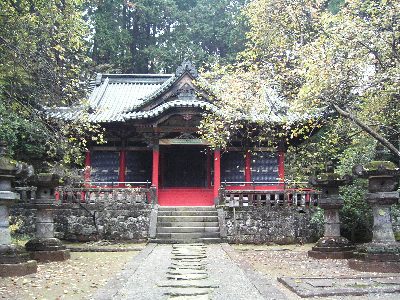
Ryoanji Temple: Hall of Compassionate Eyes
織田信長と比叡山の関係
織田信長と比叡山、その間には深い歴史が流れています。
信長による比叡山焼き討ちは、天台宗との関係を一変させた出来事でした。
一方、天海はこの時代の波乱を潜り抜け、徳川家康の側近として、また天台宗を学びながら影響力を持ち続けました。
信長の野望は、武田信玄の招聘を受けて甲斐国に移住した天海にも影響を及ぼし、後に武蔵国の無量寿寺北院にて新たな歩みを進めることになります。
さらに、天海は大坂の陣の発端となった方広寺鐘銘事件にも関わり、この時代の政治的な動きに深く関与していたことが伺えます。
天海が創設した山王一実神道は、彼が「東照大権現」として祀られるきっかけともなりました。
このように、織田信長と比叡山の関係は、ただの対立以上のものであり、その後の日本の歴史に大きな影響を与えたのです。
武田信玄との甲斐国への移住
甲斐国への移住は、天海が武田信玄の招聘を受けたことに始まります。
この時代、天海は多くの知識と経験を持つ僧であり、慈眼大師としても知られていました。
徳川家康の側近として、また、織田信長による比叡山焼き討ちの生き残りとして、彼の人生は波乱に富んでいました。
武田信玄は、そんな天海の才能を高く評価し、甲斐国へと招いたのです。
天海は武蔵国の無量寿寺北院から甲斐国へと移住し、その地で天台宗を学び、さらに深い宗教的知見を広めることになります。
この移住は、後の大坂の陣の発端となった方広寺鐘銘事件や、山王一実神道、さらには家康の神号「東照大権現」を主張し権力を誇示した怪僧としての彼の影響にも繋がっていくのです。
天海の甲斐国への移住は、単に地理的な移動以上の意味を持ち、日本の歴史における宗教的及び政治的な影響を与えた重要な出来事であったと言えるでしょう。
無量寿寺北院での活動
無量寿寺北院は、武蔵国に根を下ろした天台宗の寺院で、天海がその歴史の一部を紡いだ場所です。
彼は、徳川家康の側近としても知られ、慈眼大師と呼ばれるほどの高僧でした。
天海は織田信長による比叡山の焼き討ちを生き延び、武田信玄からの招聘を受けて甲斐国へ移住した経験を持ちます。
さらに、大坂の陣を引き起こした方広寺鐘銘事件にも関わりがあり、「東照大権現」として祀られることになりました。
無量寿寺北院での活動は、彼の多岐にわたる影響力を物語るものであり、山王一実神道など、彼が関わった宗教的な動きもこの地で展開されました。
天海の足跡をたどることで、日本の歴史における宗教の役割や、政治との密接な関係を垣間見ることができるでしょう。
方広寺鐘銘事件と大坂の陣
方広寺鐘銘事件は、大坂の陣への道を切り開いた一大事件でした。
この鐘に刻まれた一文が、徳川家康の逆鱗に触れることとなります。
「国家安康、君臣豊楽」という言葉が、家康の政権を揺るがす暗示と捉えられたのです。
この背景には、天海という僧侶が大きく関わっています。
天海は、徳川家康の側近であり、天台宗を深く学んだ人物。
織田信長による比叡山焼き討ちの生き残りで、武田信玄に招かれ甲斐国に移住した経歴を持ちます。
また、武蔵国の無量寿寺北院での活動も知られています。
天海は「権現」としても崇められ、山王一実神道にも影響を与えました。
方広寺鐘銘事件は、こうした複雑な歴史背景の中で起こり、後の大坂の陣へと繋がるわけです。
この事件を通して、天海や慈眼大師のような人物が、どのように時代を動かしていったのか、その足跡をたどることは、日本史の深い理解につながります。
Relationship Between Oda Nobunaga and Mount Hiei
The relationship between Oda Nobunaga and Mount Hiei is steeped in deep historical significance.
Nobunaga’s attack on Mount Hiei drastically altered relations with the Tendai Buddhist sect.
Meanwhile, amidst the tumultuous era, the monk Tenkai navigated his way and continued to wield influence, serving as a close advisor to Tokugawa Ieyasu while pursuing studies in the Tendai tradition.
Nobunaga’s ambitions affected Tenkai, who, invited by Takeda Shingen, relocated to Kai Province and later progressed with new initiatives at the Muryojuji Kita-in Temple in Musashi Province.
Additionally, Tenkai was involved in the pivotal bell inscription incident at the Hojoji Temple, which set the stage for the Siege of Osaka and underscored his deep political involvement during that period.
The Shingo Ichiji Shinto sect, founded by Tenkai, became the foundation for his veneration as “Tokugawa Taiishin,” a figure of considerable influence in Japanese history, beyond mere opposition.
Moving to Kai Province with Takeda Shingen
The move to Kai Province began when Tenkai accepted an invitation from Takeda Shingen.
At the time, Tenkai was a knowledgeable and experienced monk, also known as the “Jigan Daishi.”
As a close aide to Tokugawa Ieyasu and a survivor of Oda Nobunaga’s attack on Mount Hiei, his life was full of ups and downs.
Takeda Shingen highly valued Tenkai’s talents and invited him to Kai Province.
Tenkai relocated from Muryojuji Kita-in Temple in Musashi Province to Kai Province, where he deepened his studies of the Tendai Buddhist sect and broadened his religious knowledge further.
This relocation had profound implications, connecting to incidents such as the bell inscription incident at Hojoji Temple that ignited the Siege of Osaka, and to the influence of Tenkai, who later claimed power as the “Tokugawa Taiishin.”
Tenkai’s move to Kai Province was more than just a geographical shift; it was a significant event with religious and political implications that affected Japanese history.
Activities at Muryojuji Kita-in Temple
Muryojuji Kita-in Temple in Musashi Province was where the Tendai Buddhist sect took root, and where Tenkai wove part of his history.
He was renowned as a venerable monk, also known as “Jigan Daishi,” and served as a close aide to Tokugawa Ieyasu.
Surviving Oda Nobunaga’s attack on Mount Hiei, Tenkai accepted an invitation from Takeda Shingen to relocate to Kai Province, where he continued his studies of the Tendai Buddhist sect and expanded his religious expertise.
Furthermore, his activities at Muryojuji Kita-in Temple in Musashi Province are well-known.
Tenkai was involved in the bell inscription incident at Hojoji Temple, which led to his veneration as “Tokugawa Taiishin” and influenced various religious movements such as the Shingo Ichiji Shinto sect.
Following Tenkai’s footsteps allows us to glimpse the roles of religion and close political ties in Japanese history.
Hojoji Temple Bell Inscription Incident and the Siege of Osaka
The Hojoji Temple Bell Inscription Incident was a significant event that paved the way for the Siege of Osaka.
A single phrase inscribed on the bell offended Tokugawa Ieyasu.
This phrase, “Kokka Anko, Kunshin Horaku,” was interpreted as a threat to Ieyasu’s rule.
In this context, the monk Tenkai played a significant role.
Tenkai, a close aide to Tokugawa Ieyasu and a deep scholar of the Tendai Buddhist sect, survived Oda Nobunaga’s attack on Mount Hiei and accepted an invitation from Takeda Shingen to move to Kai Province.
He was also known for his activities at Muryojuji Kita-in Temple in Musashi Province.
Tenkai was revered as a “gongen” and influenced the Shingo Ichiji Shinto sect.
The Hojoji Temple Bell Inscription Incident unfolded within this intricate historical backdrop and led to the subsequent Siege of Osaka.
Understanding how figures like Tenkai and Jigan Daishi shaped their era through such incidents enriches our comprehension of Japanese history.
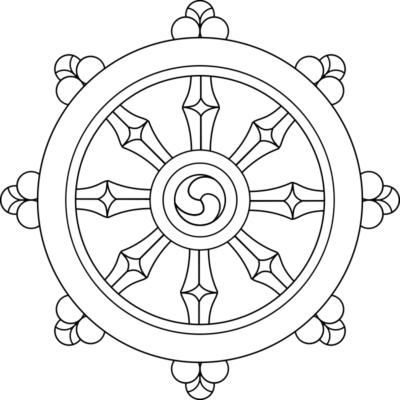
Wheel of Treasures
天海と山王一実神道
天海という名を聞いて、皆様は何を思い浮かべるでしょうか。
慈眼大師天海は、徳川家康の側近としても知られ、天台宗を深く学んだ僧でした。
彼の人生は、まさに波乱に満ちたものでした。
織田信長による比叡山の焼き討ちを生き延び、武田信玄からの招聘を受けて甲斐国に移住したこともあります。
また、武蔵国の無量寿寺北院での活動や、大坂の陣の発端となった方広寺鐘銘事件にも関与しているのです。
天海は「権現」としても崇敬され、彼の影響は山王一実神道にも及びます。
この神道は、天海の精神的遺産とも言えるもので、彼の教えや生き方が色濃く反映されています。
天海の人生を振り返ることで、日本の歴史の一端に触れることができるのです。
彼の足跡は、今も多くの人々に影響を与え続けています。
「権現」としての天海
天海は、江戸時代初期に活躍した僧侶で、徳川家康の側近としても知られています。
彼の人生は、まさに波乱に満ちたものでした。
織田信長による比叡山の焼き討ちを生き延び、その後、武田信玄に招かれて甲斐国へ移住。
さらには、武蔵国の無量寿寺北院で学びを深め、天台宗の教えを広めることに尽力しました。
また、大坂の陣の発端となった方広寺鐘銘事件にも関わりがあったとされ、その影響力は計り知れません。
天海は「権現」としても崇敬され、彼が築いた山王一実神道は、後世に大きな影響を与えました。
慈眼大師としても知られる彼の功績は、今日においても多くの人々に尊敬されています。
このように、天海の生涯は、日本の歴史の中で非常に重要な役割を果たしているのです。
Tenkai and the San’ou-ichi Jitsu Shinto
When you hear the name Tenkai, what comes to mind?
Known as the Great Teacher with Compassionate Eyes, Tenkai was not only a close confidant of Tokugawa Ieyasu but also a deeply learned monk of the Tendai sect.
His life was truly tumultuous.
Surviving the burning of Mt. Hiei by Oda Nobunaga, he later relocated to Kai Province at the invitation of Takeda Shingen.
His activities at the Muryojuji Kokuin in Musashi Province and his involvement in the catalyst for the Osaka Campaign, the Houkouji Bell Inscription Incident, are well-documented.
Tenkai was revered as a “gongen” and his influence extended to the San’ou-ichi Jitsu Shinto.
This Shinto tradition reflects his spiritual legacy, embodying his teachings and way of life.
Reflecting on Tenkai’s life allows us to touch a part of Japan’s history.
His footsteps continue to inspire many people today.
Tenkai as a “Gongen”
Tenkai, a prominent monk during the early Edo period, was also known as a close associate of Tokugawa Ieyasu.
His life was marked by tumultuous events.
He survived Oda Nobunaga’s burning of Mt. Hiei and later moved to Kai Province at the invitation of Takeda Shingen.
Furthermore, he deepened his studies at the Muryojuji Kokuin in Musashi Province, striving to spread the teachings of the Tendai sect.
It’s also known that he was involved in the Houkouji Bell Inscription Incident, which became the catalyst for the Osaka Campaign, underscoring his immense influence.
Tenkai was revered as a “gongen,” and the San’ou-ichi Jitsu Shinto that he founded exerted significant influence in later generations.
His accomplishments as the Great Teacher with Compassionate Eyes continue to be revered by many people today.
Thus, Tenkai’s life played an extremely important role in Japanese history.
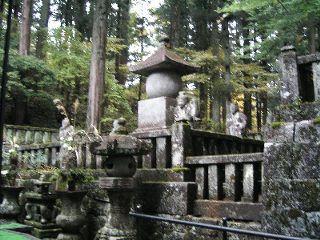
Ryoanji Temple: Ji’endou, Tenkai’s Grave
天海にまつわる廟所と像
天海と聞けば、多くの日本人はその名を徳川家康の側近として知っているでしょう。
しかし、彼の生涯はそれだけではありません。
慈眼大師とも称される天海は、天台宗を深く学び、織田信長による比叡山の焼き討ちから逃れ、武田信玄の招聘を受けて甲斐国へ移住した経験を持ちます。
その後、武蔵国の無量寿寺北院にて修行を重ね、大坂の陣の発端となった方広寺鐘銘事件にもその名が見え隠れします。
また、山王一実神道の開祖としても知られ、彼の影響は「東照大権現」としても広く認識されています。
天海にまつわる廟所や像を訪れることで、ただの歴史上の人物ではなく、その深い教えや影響力を肌で感じることができるでしょう。
天海の足跡を辿る旅は、歴史の教科書を超えた、生きた歴史との対話へと誘います。
天海の廟所
天海と聞けば、多くの日本史ファンはその名を知っているだろう。
慈眼大師としても知られるこの人物は、徳川家康の側近としても有名であり、天台宗の深い学びを経て、その人生は多岐にわたる。
織田信長による比叡山の焼き討ちから逃れ、武田信玄の招聘を受けて甲斐国に移住したこともある。
その後、武蔵国の無量寿寺北院に身を寄せ、大坂の陣の発端とも言われる方広寺鐘銘事件にもその名が見え隠れする。
さらに、山王一実神道を確立し、「東照大権現」として徳川家康を祀ったことは、日本史の中でも特筆すべき出来事と言えるだろう。
天海の廟所は、彼の生涯を偲び、その教えを今に伝える場所として、多くの訪問者を惹きつけている。
彼の足跡を辿ることで、日本の歴史の一端を垣間見ることができるのだ。
天海像の多様性
天海という人物は、ただの僧侶にとどまらず、日本史において重要な役割を果たした人物です。
慈眼大師とも呼ばれ、徳川家康の側近として知られています。
彼の生きた時代は、織田信長による比叡山焼き討ちや、武田信玄に招聘されて甲斐国への移住など、激動の時代でした。
さらに、武蔵国の無量寿寺北院における活動や、大坂の陣を引き起こすきっかけとなった方広寺鐘銘事件にも関わりがあります。
天海は、山王一実神道を学び、後に「権現」として祀られるほどの影響力を持ちました。
彼の存在は、天台宗を学んだ僧侶から、歴史の表舞台で活躍する側近、そして神として崇められるに至るまで、その多様性に富んでいます。
天海像の背後にある物語は、ただの歴史上の人物を超え、時代を超えて語り継がれるべきものです。
天海の江戸設計への影響
江戸時代初期、徳川家康の側近として知られる天海は、日本の歴史において重要な役割を果たしました。
慈眼大師とも呼ばれ、天台宗を深く学んだ彼は、織田信長による比叡山の焼き討ちや武田信玄に招聘されて甲斐国に移住するなど、波乱に満ちた生涯を送ります。
特に注目すべきは、彼の宗教的、政治的影響力が江戸の都市設計にどのように反映されたかです。
天海は武蔵国の無量寿寺北院に関わり、大坂の陣の発端となった方広寺鐘銘事件にも関与。
また、「東照大権現」として徳川家康を祀ることで、山王一実神道の普及にも寄与しました。
これらの活動を通じて、天海は江戸の精神的な基盤を形成し、都市設計における宗教的要素の重要性を示唆しています。
天海の功績は、単に政治的な側近としてだけではなく、江戸の街の姿に深く刻まれたのです。
Sites and Statues Honoring Tenkai
When you hear the name Tenkai, many Japanese think of him as a close associate of Tokugawa Ieyasu. However, his life encompasses much more than that.
Known also as Jigen Daishi, Tenkai was deeply versed in Tendai Buddhism. He survived Oda Nobunaga’s burning of Mt. Hiei and later relocated to Kai Province upon receiving an invitation from Takeda Shingen.
He furthered his studies at the Muryojuji Kitain in Musashi Province and his name is intertwined with the pivotal Honnoji Incident that precipitated the Osaka Campaign.
Tenkai is revered as a “gongen” and his influence extended to the establishment of the Yamao One Jitsu Shinto. Visiting the sites and statues associated with Tenkai allows one to experience not just a historical figure, but to feel his profound teachings and influence firsthand.
The Path of Tenkai
Tenkai is a name familiar to many students of Japanese history. Known as Jigen Daishi, he was not only a close associate of Tokugawa Ieyasu but also deeply involved in Tendai Buddhism.
His life spanned tumultuous times, surviving Oda Nobunaga’s burning of Mt. Hiei and later moving to Kai Province upon invitation from Takeda Shingen.
He furthered his studies at Muryojuji Kitain in Musashi Province and his name is connected with the Honnoji Incident, which sparked the Osaka Campaign.
Moreover, he established Yamao One Jitsu Shinto and his influence as “gongen” is widely recognized. Revered for his spiritual legacy, Tenkai’s achievements continue to command respect from many.
The Diversity of Tenkai’s Statues
Tenkai is more than just a monk; he played a crucial role in Japanese history. Known as Jigen Daishi, he was a close associate of Tokugawa Ieyasu and deeply immersed in Tendai Buddhism.
His era was marked by turbulent events like Oda Nobunaga’s burning of Mt. Hiei and relocating to Kai Province upon invitation from Takeda Shingen.
He was also involved in activities at Muryojuji Kitain in Musashi Province and linked to the Honnoji Incident, which precipitated the Osaka Campaign.
Tenkai studied Yamao One Jitsu Shinto and eventually came to be revered as “gongen,” symbolizing his diverse impact from a learned Tendai monk to a pivotal figure in Japanese history.
The Stories Behind Tenkai’s Influence on Edo Design
During the early Edo period, Tenkai, known as a close confidant of Tokugawa Ieyasu, played a significant role in Japanese history.
Also known as Jigen Daishi, deeply learned in Tendai Buddhism, he lived a tumultuous life, escaping Oda Nobunaga’s burning of Mt. Hiei and moving to Kai Province upon an invitation from Takeda Shingen.
Particularly noteworthy is how his religious and political influence shaped the design of Edo.
Tenkai was involved with Muryojuji Kitain in Musashi Province and linked to the Honnoji Incident, which triggered the Osaka Campaign. Moreover, by enshrining Tokugawa Ieyasu as “Toshogu,” he contributed to the spread of Yamao One Jitsu Shinto.
Through these activities, Tenkai formed the spiritual foundation of Edo and underscored the significance of religious elements in urban design.
Tenkai’s legacy isn’t merely that of a political confidant but deeply ingrained in the cityscape of Edo.
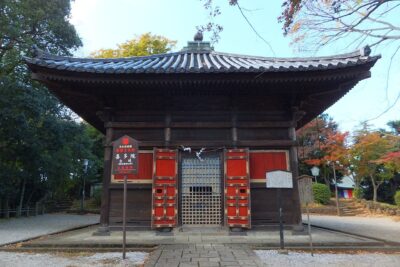
Kitain Temple – Jigen Hall
天海に関する逸話と異説
天海と聞けば、多くの人がその神秘的な存在に興味を惹かれることでしょう。
実際、天海は徳川家康の側近として、また慈眼大師としても知られ、その生涯は多くの逸話や異説に彩られています。
天台宗を学び、若き日には織田信長による比叡山の焼き討ちを生き延び、武田信玄の招聘を受けて甲斐国に移住したとされる彼の人生は、まさに波乱に満ちていました。
また、武蔵国の無量寿寺北院における活動や、大坂の陣の発端となった方広寺鐘銘事件に関わったとも伝えられています。
さらに、山王一実神道の開祖としてもその名を残し、「権現」(ごんげん)日本の神の神号の一つとして祀られるに至った天海の人生は、まさに伝説の連続です。
これらの逸話や異説を通じて、天海がいかに時代を超えた影響力を持つ人物であったかが伺えます。
Anecdotes and Controversies Surrounding Tenkai
When you hear the name Tenkai, many are drawn to the mystique surrounding this figure.
Indeed, Tenkai is renowned as a close confidant of Tokugawa Ieyasu and revered as the Jigen Daishi, with his life colored by numerous anecdotes and alternative accounts.
Having studied Tendai Buddhism, he survived Oda Nobunaga’s burning of Mount Hiei and relocated to Kai Province upon invitation by Takeda Shingen, marking his life with tumultuous events.
It’s also said he played a role in activities at Muryojuji Hokkoin in Musashi Province and was linked to the incident involving the inscription of the Hojoji Temple bell, which sparked the Osaka Campaign.
Furthermore, as the founder of San’ou Ichijitsu Shinto, Tenkai’s legacy endures, revered as a “Gongen,” one of Japan’s divine titles.
Through these anecdotes and controversies, Tenkai’s enduring influence across generations becomes apparent.
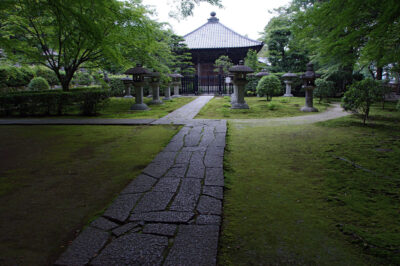
Jigen Hall in Otsu City
天海が登場するフィクション作品
天海と聞くと、多くの人は徳川家康の側近としてのイメージを持つかもしれません。
しかし、彼の生涯はフィクション作品の中でも多彩に描かれています。
天海は天台宗を学び、織田信長による比叡山焼き討ちの際にもその知識と才能を生かしました。
武田信玄からの招聘を受けて甲斐国に移住し、その後、武蔵国の無量寿寺北院にて修行を続けた彼の人生は、まさに波乱に満ちています。
また、大坂の陣の発端となった方広寺鐘銘事件にも関わり、山王一実神道の教えを広め、「東照大権現」としても知られるようになりました。
これらの事績は、天海を主人公または重要なキャラクターとして扱ったフィクション作品において、彼の多面性を色濃く反映しています。
読者がこれらの作品を通じて、歴史上の人物の一面だけでなく、彼らの生きた時代や思想、文化に触れることができるのです。
参考文献と関連項目
天海とは、江戸時代初期に活躍した僧侶で、徳川家康の側近としても知られています。
慈眼大師という称号で親しまれ、天台宗の教えを学んだ彼は、織田信長による比叡山の焼き討ちを生き延び、その後武田信玄の招聘を受けて甲斐国に移住しました。
また、武蔵国の無量寿寺北院においても重要な役割を果たし、山王一実神道を広めるなど、その影響は広範囲に及びます。
特に注目すべきは、大坂の陣の発端となった方広寺鐘銘事件における彼の関与です。
天海は「東照大権現」としても尊崇され、徳川家康との深い関係が彼の歴史的地位を高めています。
彼の生涯は、日本の宗教だけでなく、政治史においても重要な役割を果たしているのです。
Fictional Works Featuring Tenkai
When you hear the name Tenkai, many might immediately think of him as a close associate of Tokugawa Ieyasu.
However, his life has been vividly portrayed in various fictional works.
Tenkai studied the Tendai Buddhist sect and utilized his knowledge and talents during the burning of Mount Hiei by Oda Nobunaga.
After receiving an invitation from Takeda Shingen, he relocated to Kai Province, and later continued his training at Muryojuji North Temple in Musashi Province. His life was indeed filled with tumultuous events.
He was also involved in the Hojoji Bell Inscription Incident, which sparked the Osaka Campaign, and he propagated the teachings of San’no Ichijitsu Shinto, becoming known as “Tokugawa Daigongen.”
These achievements vividly reflect Tenkai’s multifaceted persona in fictional works where he appears as a protagonist or a significant character.
Through these works, readers can not only explore different facets of historical figures but also delve into the eras they lived in, their ideologies, and cultures.
References and Related Articles
Tenkai was a prominent Buddhist monk who flourished during the early Edo period and was known as “Jigen Daishi” (Great Master of Compassionate Eyes). He studied the teachings of the Tendai sect and survived the burning of Mount Hiei by Oda Nobunaga before moving to Kai Province at the invitation of Takeda Shingen.
He played a crucial role at Muryojuji North Temple in Musashi Province and promoted San’no Ichijitsu Shinto, extending his influence widely.
Of particular note is his involvement in the Hojoji Bell Inscription Incident, which marked the beginning of the Osaka Campaign.
Tenkai is revered as “Tokugawa Daigongen,” and his close relationship with Tokugawa Ieyasu elevated his historical stature.
His life played a significant role not only in Japanese religion but also in political history.
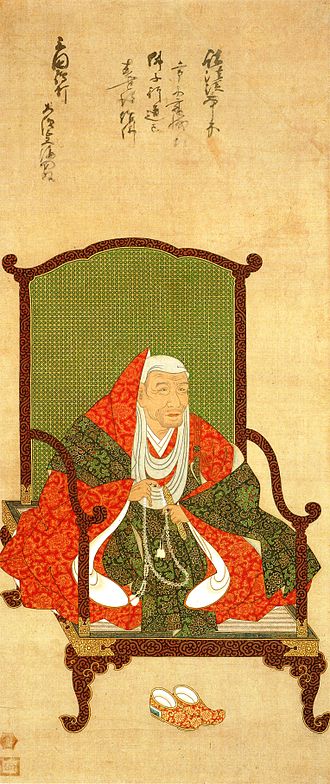
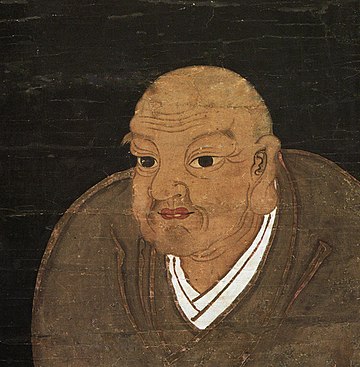
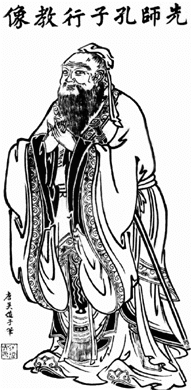
コメント